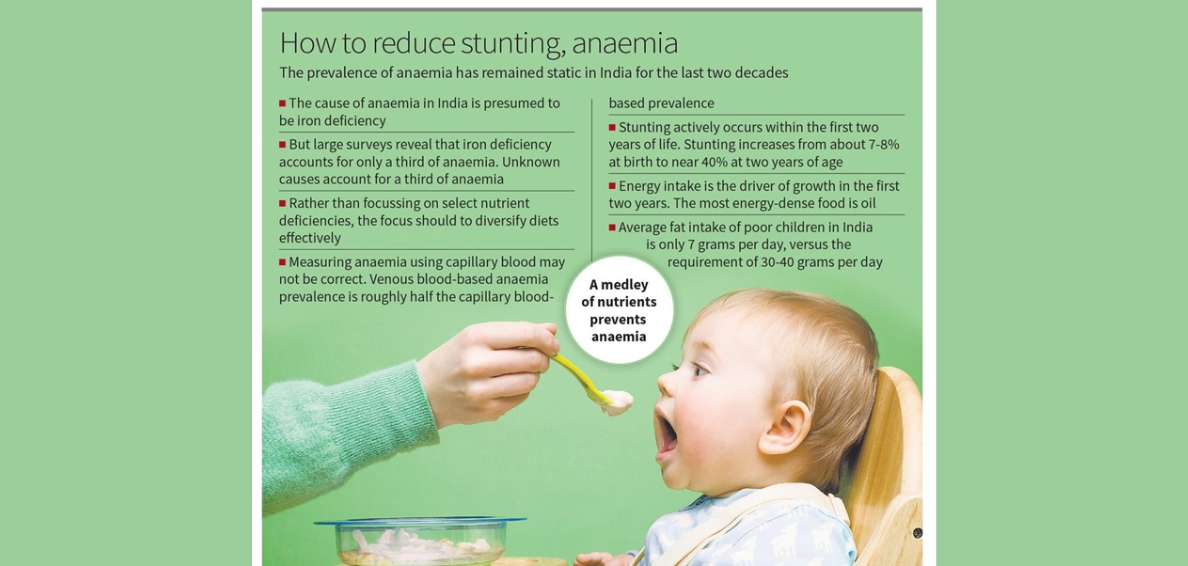- Courses
- GS Full Course 1 Year
- GS Full Course 2 Year
- GS Full Course 3 Year
- GS Full Course Till Selection
- CSAT
- 5 LAYERED ARJUNA Mentorship
- Public Administration Optional
- Online Program
- GS Recorded Course
- NCERT Batch
- Polity Module Course
- Geography Module Course
- Economy Module Course
- AMAC Module Course
- Modern India, Post Independence & World History Module Course
- Environment Module Course
- Governance Module Course
- Science & Tech. Module Course
- International Relations and Internal Security Module Course
- Disaster Management Module Course
- Ethics Module Course
- Essay Module Course
- Current Affairs Module Course
- ABOUT US
- OUR TOPPERS
- TEST SERIES
- FREE STUDY MATERIAL
- VIDEOS
- CONTACT US
Public Health Nutrition Policies Need Novelty and Precise Targeting
Public Health Nutrition Policies Need Novelty and Precise Targeting
06-01-2025

- The Global Nutrition Targets (GNTs) were set by the World Health Assembly to guide countries in improving maternal and child nutrition. These targets include:
- Reducing stunting by 40% in children under the age of five.
- Reducing anaemia by 50% in women of reproductive age.
- Ensuring there is no increase in childhood overweight.
- These targets are key in measuring the effectiveness of nutrition policies worldwide and are intended to guide efforts to reduce malnutrition.
- A recent study published in The Lancet reviewed progress towards these targets from 2012 to 2021 across 204 countries.
- It projected the progress up to 2050. The findings showed that many countries have made slow progress, and it is expected that by 2030, very few countries (excluding India) will meet the stunting target.
- Moreover, no country is expected to meet the targets for low birth weight, anaemia, or childhood overweight.
- While there has been some progress in reducing undernutrition, childhood overweight continues to rise.
Why the Slow Progress?
The slow progress in meeting the Global Nutrition Targets (GNTs) is partly due to poor implementation of nutrition policies. However, there are other underlying reasons that need to be considered.
-
The Anaemia Situation in India
- The prevalence of anaemia in India has remained constant for the last two decades.
- Despite policies that focus on improving iron intake through fortification and supplementation, anaemia continues to be a widespread issue.
- Iron deficiency is often assumed to be the main cause of anaemia, but large-scale surveys show that iron deficiency accounts for only one-third of cases.
- The remaining two-thirds of anaemia cases have other causes that are not well understood.
- A study in North Karnataka found that anaemia increased when the midday school meal program was stopped during the COVID lockdown, but this was not caused by a lack of iron.
- This suggests that a variety of nutrients (not just iron) is needed to prevent anaemia, and a diversified diet is more effective than focusing on individual nutrients.
-
Challenges with Measuring Anaemia
- Another reason for the slow progress is the measurement methods used for anaemia.
- In India, venous blood tests (considered the gold standard by the World Health Organization) show much lower levels of anaemia compared to tests using capillary blood (from a finger prick).
- This discrepancy needs to be addressed for accurate data collection.
- Additionally, the diagnostic cut-offs for anaemia can vary by population.
- What is considered "normal" in one group might not be suitable for another. More accurate and context-specific measurements are necessary for better diagnosis and intervention.
-
Stunting: A Preventable Problem
- Stunting, which affects a child’s growth and development, has seen little progress in many countries.
- The quick fix might seem to be feeding more children, but this can have unintended consequences.
- If children are overfed after the age of two, they are more likely to become overweight rather than experiencing proper growth.
- Stunting primarily occurs in the first two years of life.
- In India, stunting rates rise from about 7-8% at birth to nearly 40% by the time children are two years old. This is the critical period for growth, and it is difficult to reverse stunting after this age.
- It is essential to focus on prevention during the first two years of life to address stunting effectively.
-
The Role of Fat in Early Childhood Nutrition
- The most energy-dense food for young children is oil, but studies show that poor children in India consume only about 7 grams of fat per day, far below the 30-40 grams they need for proper growth.
- This nutritional gap is concerning, as it affects children’s ability to grow and thrive.
- The new POSHAN guidelines in India recommend adding oil to the diets of children under three years, which is a step in the right direction.
- Providing the right amount of healthy fats in early childhood nutrition is essential to prevent stunting.
-
Overweight and Metabolic Risk: A Growing Concern
- Although the overweight target for children has increased in many countries, this doesn’t fully capture the risks of metabolic overnutrition—a condition where children are at risk of diseases like diabetes, heart disease, and obesity, even if they are not overweight.
- In India, studies show that at least 50% of children aged 5-19 face metabolic risk, even those who are stunted or underweight.
- This highlights the importance of addressing both undernutrition and overnutrition together.
What Needs to Change: A New Approach
To make significant progress in public health nutrition, a new and innovative approach is needed. The focus should be on double-duty actions that address both undernutrition and overnutrition at the same time.
-
Diversified Diets
- Instead of focusing only on specific nutrient deficiencies like iron, it’s time to promote a more balanced and diverse diet that includes a variety of nutrients essential for health.
- The focus should be on improving overall diet quality rather than just targeting individual nutrients.
-
Accurate Data and Measurement
- More precise and context-specific measurements for malnutrition are necessary.
- There is a need for consistent and accurate data collection to understand the true causes of malnutrition in different populations.
- This will help in creating targeted policies and interventions.
-
Preventing Stunting in the First Two Years
- The most crucial period for preventing stunting is the first 1000 days of life (from conception to the child’s second birthday).
- Public health policies must focus on preventing stunting during this period by improving the nutritional quality of food and ensuring adequate energy intake.
-
Tackling Overnutrition and Metabolic Risk
- Alongside tackling undernutrition, it is important to address the rising issue of overweight and metabolic diseases in children.
- Policies should focus on balanced nutrition that prevents both undernutrition and overnutrition, especially as metabolic overnutrition is a significant problem, even in children who are stunted or underweight.
-
Improving Fat Intake in Early Childhood
- There is a need to improve fat intake for young children, especially those from disadvantaged backgrounds.
- Increasing access to healthy fats like oils and dairy is crucial for proper growth during the first two years of life.
Conclusion: A Call for Precision and Novelty
The slow progress towards achieving the Global Nutrition Targets (GNTs) highlights the need for a fresh approach in public health nutrition. Focusing only on undernutrition or overnutrition separately will not solve the problem. Instead, policies need to adopt double-duty actions that tackle both challenges simultaneously.
|
Also Read |
|



